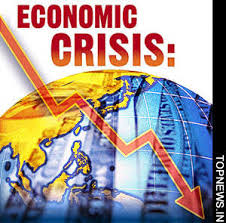17th August 2013, Saturday; India’s top policy makers gathered to discuss what would be an obscure event in the history of RBI (Reserve Bank of India). The meeting took place at our former Prime Minister, Dr. Manmohan Singh’s house amongst the past, present and the future heads of our country’s central bank. Just the day before this meeting, there had been a rout in India’s Financial Markets. Hence India’s faces another economic and financial turmoil. History repeated itself and the leaders of our countries learnt nothing from the economic crisis of 1990 and 1991.
According to this meeting, one of the major reasons that we were in this crisis was the new capital controls that were announced on the evening of August 14th to stop cash flowing out of the country and stem the decline of the rupee. The new rules limit the ability of Indian individuals and firms to take money out of the country. On August 16, 2013; the main equity index fell 4%, and the rupee reached a new low of 61.7 to the dollar. There was stress in the system and rupee became the worst performing stock market worldwide. Another drawback of these capital controls were that unless they have the permission from the central bank, the companies cannot invest more than their book value on direct investments abroad.
After that, another major reason for India facing this economic crisis is the high Current Account Deficit (CAD). In 2013 that was about $85 billion which was almost 4.5% of our GDP. The only way this can be funded is by uncertain capital inflows year after year. As we import our major supply of oil, our net export value is not high enough to cover up this deficit. Above that is India’s gold addiction; gold is the second most imported commodity in India. Either that or it is smuggled in suitcases in bulk from other countries. Along with this, the use of domestic supply of key commodities like iron, coal, land and critical food items is not being used efficiently, leading to over-exploitation and increase in price level with low growth.
Also, India went under recapitalization, which meant that the stock market was dodgy and unpredictable. This made our market less attractive to a lot of investors, and all the loans were at risk. Recapitalization of Banks in India was done to stabilize the financial situation of the country and to regain the confidence. On the contrary it caused more turmoil and weaken our economy.
Every year new reforms are being made to bring the country out of this financial crisis, but more of same kind of reforms may not be the answer either. Furthermore, until 2011, the effect of global financial crisis has not shown any significant effect on our economy.
Present economic crisis has hit everybody hard, companies are facing bankruptcy, and families are finding it difficult to meet expenses, travel, or education. There is a price hike in almost every commodity; from a cell phone to a house to oil. As it shows, this is just the beginning and the worse is yet to come.
One thing that we all should realise is that India has great potential yet to be discovered and enhanced, what is needed is motivation in the right direction. Our work culture teaches us to be resourceful, and if we keep our traditional ethics in place, we might have a chance out of this strenuous state of affairs.





5 Comments. Leave new
Detailed and informed! The blog is well presented and quite interesting. The way the condition of the economy has been explained is commendable.
illustratively codified!
Well explained..
great…
well written . the fact that many indian companies are about to be bankrupt was previously correct but as of now the conditions are improving.